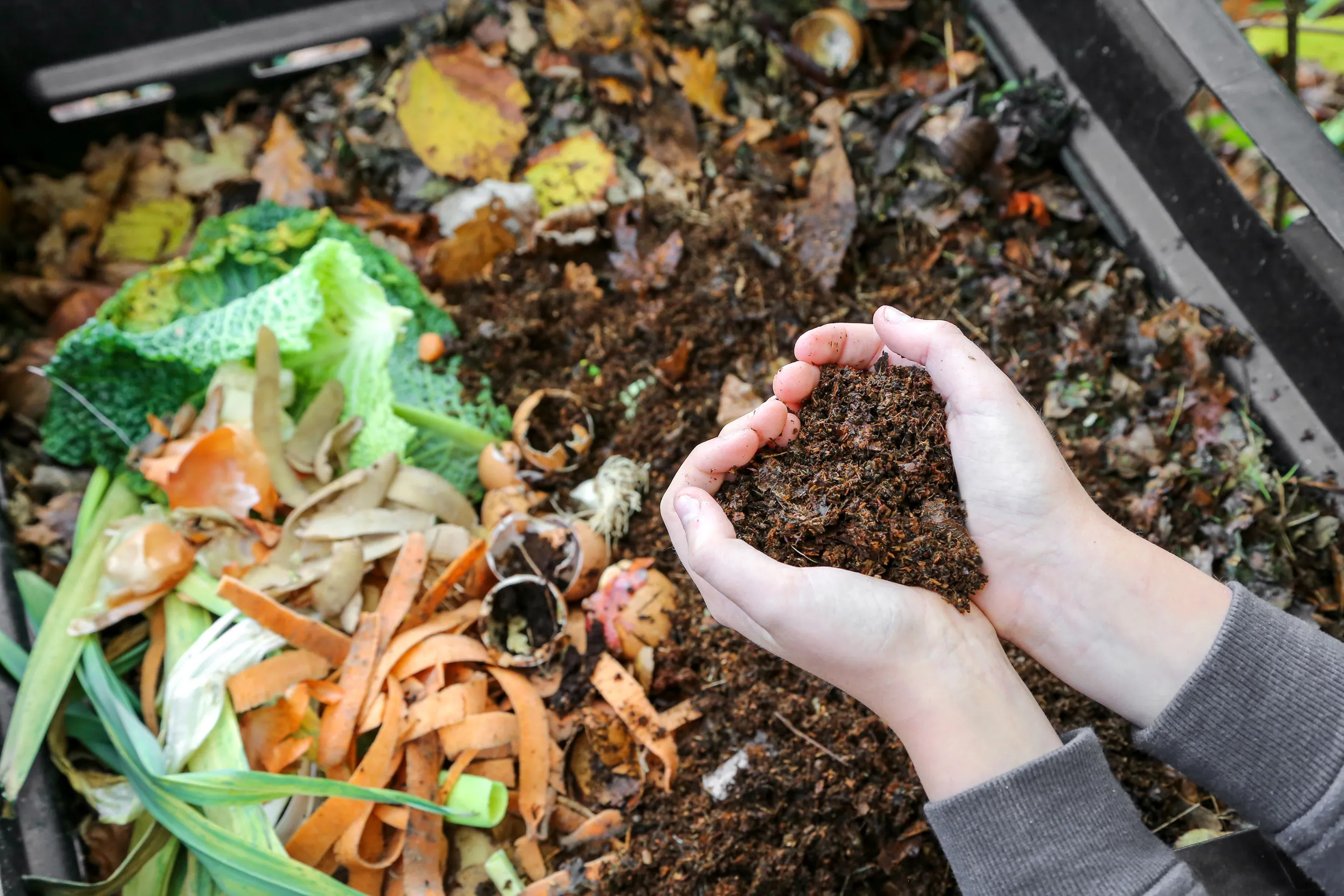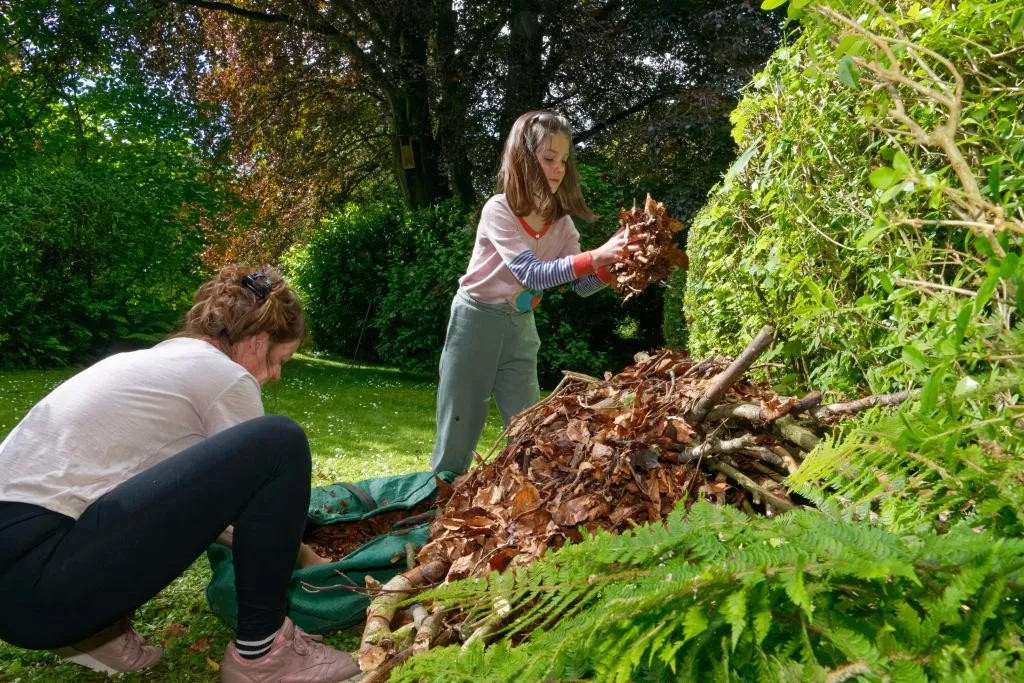Composting
Make a wildlife-friendly compost for woodlice, worms, toads, and grass snakes. Compost heaps are a great way to turn waste material from your garden and kitchen into lovely wholesome compost to put back on your garden.

Instructions
Buy or build your own compost bin
The ideal bin for wildlife is one made from slatted wood, which means that wildlife can clamber in and out of the heap. Choose one made with sustainable timber – look for the FSC (Forest Stewardship Council) logo- or even better, make one out of pallets or upcycled wood.
To make one, get hold of four wooden pallets made from sustainable timber (with the FSC logo). People often give these away for free locally.
Erect them in a square, either by fastening the corners together with strong string (known as lashing), or by nailing them together.
At some stage you will want to access the contents of the heap, so it’s good to make one side removable. As you fill the heap, it makes it easier for getting material in and out if you have a moveable side.
Feed your heap with a mix of green and brown materials
This the first secret to making great compost quickly. Aim for a mix of thin alternating layers of green (nitrogen-rich) and brown (carbon-rich) materials.
- The green includes grass clippings, weeds and uncooked vegetable peelings.
- Brown includes sticks and dried grass, wood chippings, shredded paper and cardboard.
